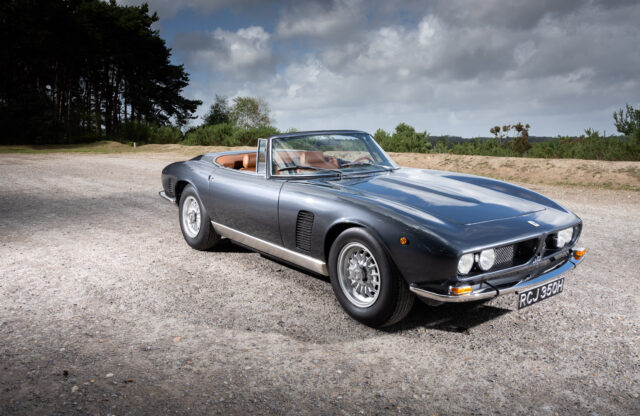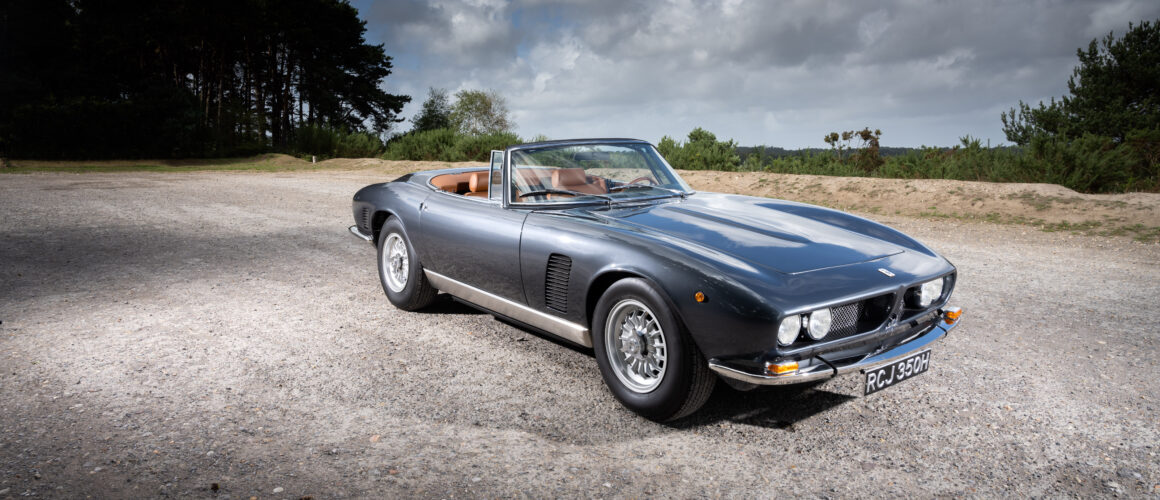If you have ever seen an Iso Grifo in profile, you will almost certainly have asked yourself what it could have been like as a convertible. Here’s the answer.
Iso Grifo convertible? No such thing? Wrong. Twice over, actually (at least). First, Bertone built a single Spider in period, but it never went any further. Second, there is this one. And it is stunning. That’s probably enough Hemingwayesque linguistic punchiness, but to be fair this is a car that warrants such a striking impact. It certainly made an enormous splash at Rétromobile in February, back in the olden days when thousands of people shared their passion by being in the same place at the same time, and when visiting car shows – indoors, what’s more – was still ‘a thing’.
Octane was aware of the project before seeing it in the metal in Paris, but was still captivated by it on the stand it shared with a Fiat Shellette, Fiat Topolino Daddario and Prinoth Snowcat… as were the hundreds of others that crowded around the Iso for the duration of the event. Poring over every detail. It was spellbinding in its stance and proportions but, best of all, such is the quality of the build, the seductive intricacy of the engineering, and especially in the hood mechanism, you would never know that it wasn’t factory original. A deal was done there and then on 6 February 2020 for Octane to drive this car a month or so later, as soon as it arrived in the UK for the summer. And then… well, you know. Fast-forward to post-lockdown (or, rather, between lockdowns) autumn, as the final embers of that summer were spitting their last, and we are with the car in the UK and ready to go. Finally.
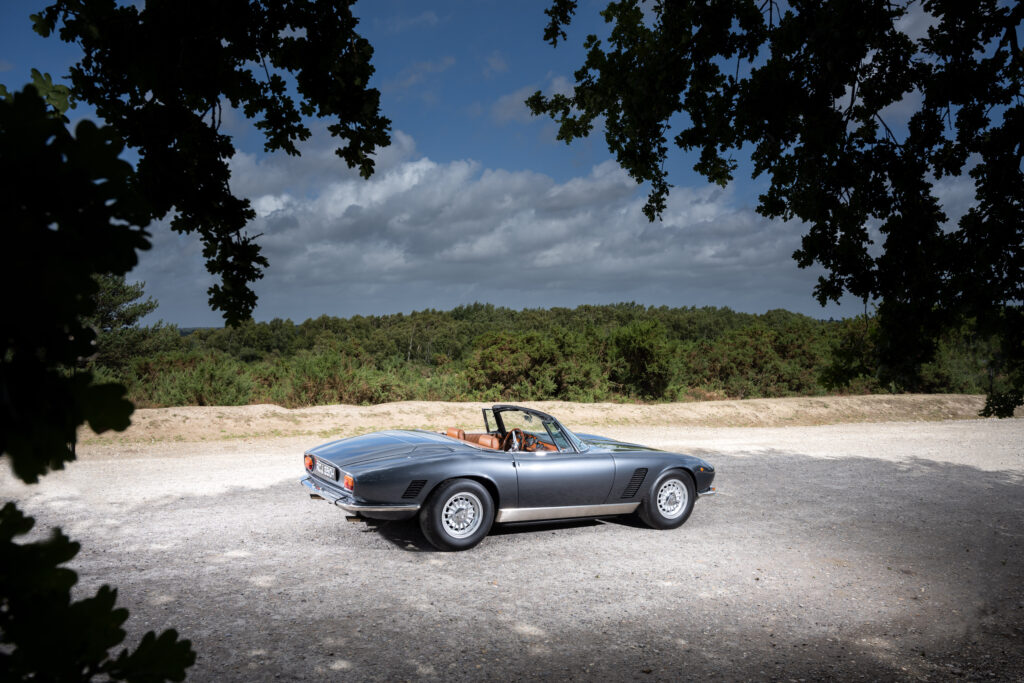
But first some background for the uninitiated. Iso is one of Italy’s more enigmatic marques, purveyor of high-quality hybrids using Yankee, principally Corvette, power; Italy’s Jensen, if you like. Founded by fridge magnate Renzo Rivolta (and that pun is the reason all journalists enjoy writing about him), it was a fairly conventional Italian 20th Century path to luxury motor manufacture, via white goods (Isothermos), then scooters, motorcycles, baby commercials, city/bubble cars (the Isetta, which of course BMW picked up and mass produced) and a not-quite-perfect first foray into GTs that possibly owed a little too much to the Gordon-Keeble.
Despite an apparent anachronism, rumours persist that a G-K was ‘borrowed’ by Iso and came back with Maranello refugee Giotto Bizzarrini’s engineering notes and lines chalked all over the chassis. Whatever else the Giugiaro-for-Bertone-styled Rivolta did, in 1962 it set the template for a rapid, Chevy smallblock-powered upmarket GT that Renzo himself, who only cared to drive extremely fast, would rather enjoy. It had wishbones at the front, de Dion rear axle, four-wheel disc brakes and sold just shy of 800 units up until 1970.
The Guigiaro-Bertone combination was called upon again to clothe Iso’s next car, the Grifo, which followed just two years later and was even more squarely aimed at Ferrari and Maserati, to the glee of the still-bitter Giotto Bizzarrini. To me it is a far better-resolved ‘pouncing’ design, though it sacrifices the 2+2 seating for 2+‘somewhere to keep your manbag’. Again packing a bowtie engine and capable of a breathtaking 160-170mph, the Grifo and its panoramic glasshouse with Stingray-style rear window was a hit in its nine-year life until its (and Iso’s) gas-guzzling bluster was extinguished by the 1970s oil crisis. During that time the Grifo had three different gearboxes (four-speed Borg Warner, or five-speed manual or three-speed auto from ZF), four engine variations (327, 427 or 454 Chevy or Ford 351) ranging from 5.4 to 7.4 litres capacity, and two faces. All for a grand total of 413 cars.
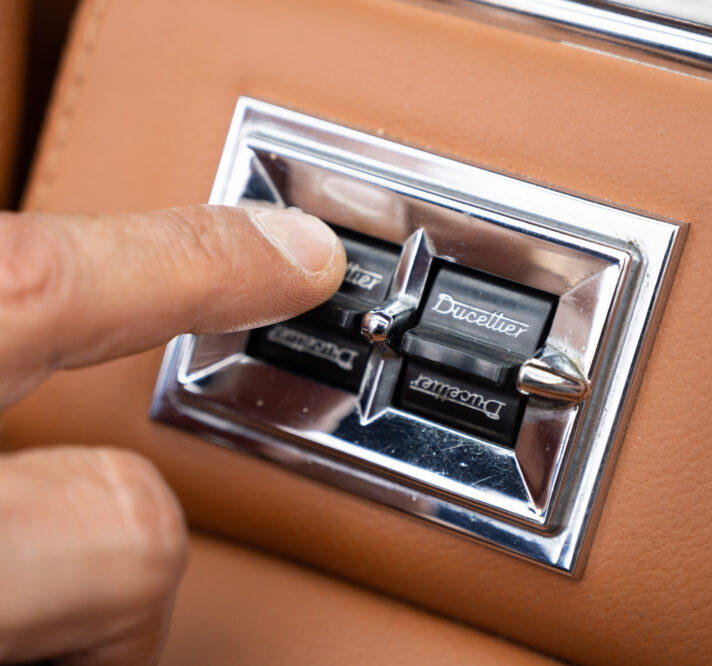
The Grifo was even more squarely aimed at Ferrari and Maserati
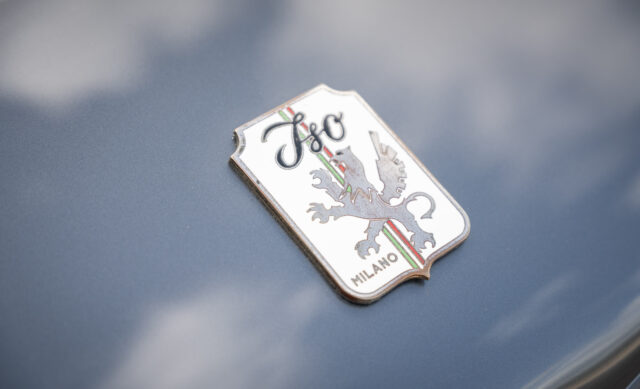
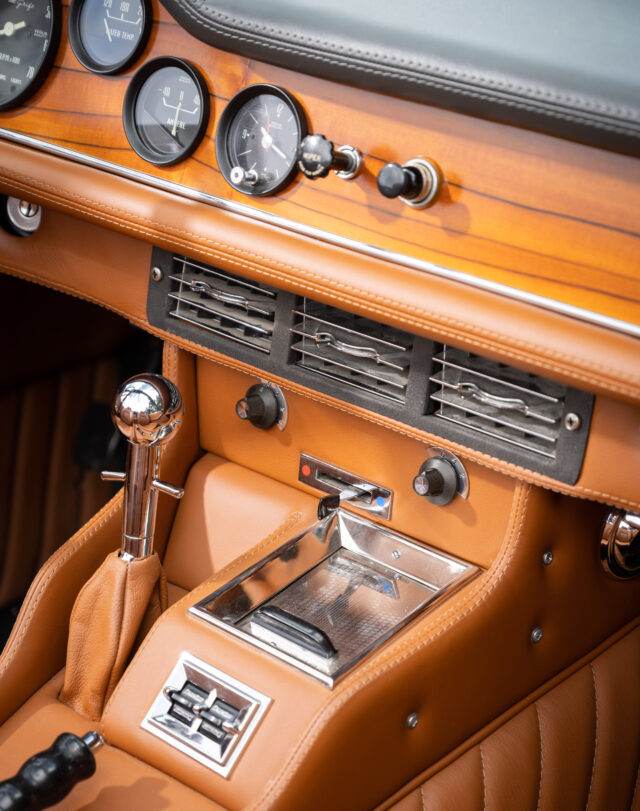
So, what of Bertone’s blind-alley convertible versions, which should not be confused with the later targa-top Grifos, which are a whole different web of confusion? That spider version actually came right at the beginning of the Grifo story. It was chassis 002, the second prototype, but because what Bertone delivered had apparently not been commissioned by Iso, it was not pursued as a result. That’s the story anyhow, plausible or not. That single spider did, however, survive (for many years in ex-pat German butcher Rudy Klein’s ever-declining treasure trove ‘junkyard’ in LA) and nowadays you can even buy a 1:43 scale model of it.
If 1:1 is more your thing, however, then look no further. Admittedly this car doesn’t have the oversized front wing grilles and sidepipes of the Bertone prototype, but that actually makes it look more authentic as a production car. In fact, the seven-year German build at Carrozzeria Scherer set out with the specific intent to ‘utilise modern engineering and restoration techniques and a design sensibility to produce an homage to how Giugiaro may well have approached a production version of the Grifo Spider’. That’s job done, I reckon.
The base is an early 1967 Series I (no. 94) that was originally a RHD coupé finished in Rosso Regale with Pelle Beige interior. Now it wears the stunning Grigio Reims Metallizzato with Cognac leather interior of the first Grifo prototype. The moment you open the modded two-stage door, which swings appreciably wider for more elegant entry, you are aware that this is not a normal Grifo. The same is true when you drop in and notice that there is more comfort thanks to the late S1 seats and that there is a discreetly integrated Vintage Air air-conditioning and heating system wired up to the original controls. Even the door-mounted arm-rest, which is noted for its tendency to hinder long-legged drivers when using the clutch, has been re-angled to prevent such snagging.
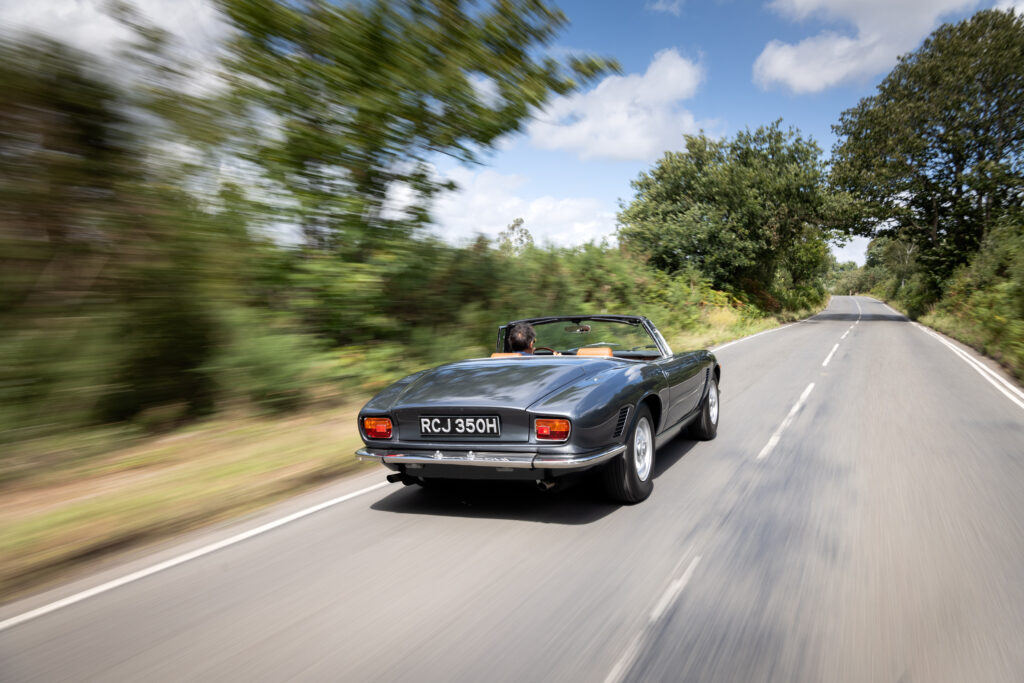
Much more cleverness is not even visible. To compensate for the lost roof rigidity, British engineer Clive Halligan-Davis spec’d heavier-gauge steel for the floorpans, while the chassis rails and A-pillars were strengthened and the sills strengthened and braced. Tubing and bracing were also added over and behind the rear axle. You simply wouldn’t know.
Mechanically, there has been similar attention to detail. The engine is a matching-numbers Corvette 327 rebuilt by Dresdener Classic Handel, while the box is a Tremec five-speed with the same ratios as the period four-speed, and all squeezed into a casing the size of the old four-speeder’s so that the tunnel and console didn’t have to be modified to accommodate the extra cog and the longer-legged touring it facilitates.
There is electric power-assisted steering that works only at manoeuvring speeds – it cuts out at 10mph, well before it becomes annoying – and the car sits on what look like magnesium alloys but are actually machined billet aluminium 7×15 knock-off (as per the late 7.0-litre Grifos) Campagnolo-alikes wearing Pirelli Cinturatos.
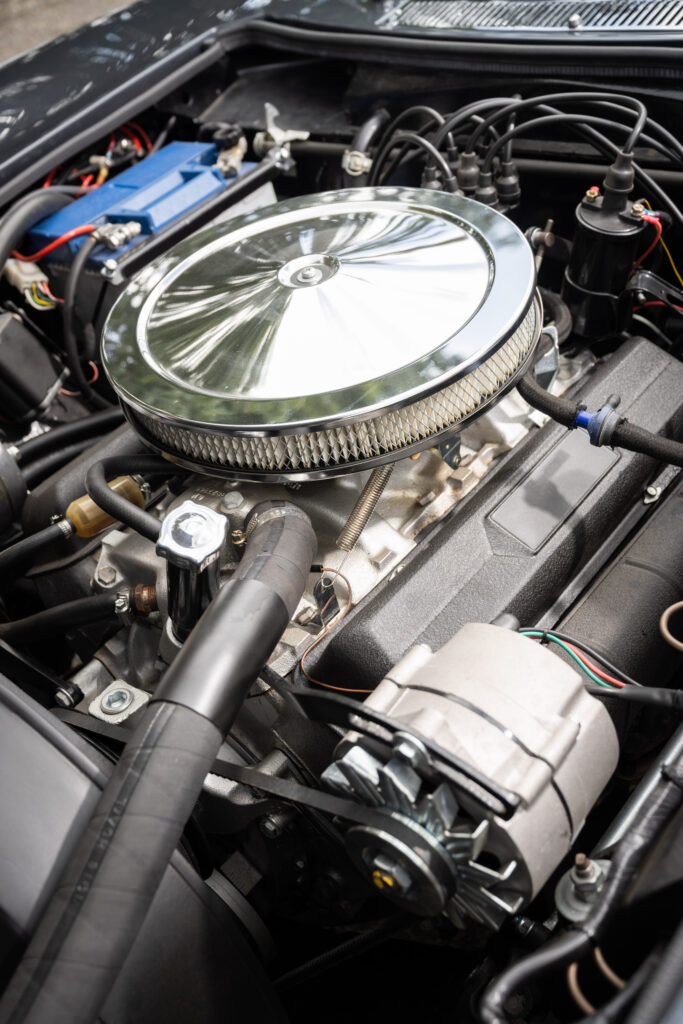
Today, this unique car is ‘owned’ by the Stuart Parr Collection, the quotation marks on ‘owned’ because, much like the Blackhawk Collection, it combines stock for sale and a substantial private collection. Browse its listings and you rapidly discern a conspicuous taste for the quirky, with beach cars and oddities such as a Renault Estafette Plein Air, Lancia Superjolly Popemobile and Honda Vamos. And Grifos, lots of Grifos, seemingly all the Grifos, in fact. I guess a one-off convertible ticks all the boxes for this eclectic selection, then.
The Collection’s eponymous owner and founder is something of a polymath. Having started by buying and selling vintage furniture as a sideline to a bar job, he speaks to Octane from Clearhouse, the spectacular clifftop modernist home he designed and built overlooking Peconic Bay on Shelter Island, in New York’s Hamptons. He has a back catalogue of other building designs, represented one of the world’s leading industrial designers and rapper Eminem, co-produced the movies 8 Mile and Get Rich or Die Tryin’ among others, is an authority on designers Jean-Michel Frank (for whom he owns the trademark) and Warren MacArthur, has appeared on Jay Leno’s Garage more than once and, having an even bigger penchant for classic Italian motorcycles than quirky European cars, even designed a bike. For the record, it’s a modern-day reimagination of the MV Agusta Magni based on a Brutale 800, and it is a worthy internet rabbithole to dive down when you have a couple of hours to spare.
He knows a thing or two about style and design, then. ‘Why the Grifo?’ we ask him, our Iso-obsessed jet-setter having flown in from Istanbul just for our photoshoot.

‘It’s the perfect blend of muscular and sensuous, the crossroads of supreme Italian design meeting total functionality, which is what it is all about for me. It’s done with enormous uncompromised style. Every time you look at a Grifo, listen to one or drive one you just get this special little feeling that you are into something so amazingly cool that no-one else has latched onto yet. It’s a bit like when you go and see a band that no-one else has heard of and you just know they are going to be huge and you were there at the start.
‘Sure, I can understand why some people argue that they don’t like the fact that the Grifo has an American engine, but I simply haven’t got time for that sort of car snobbery. After all, unlike with so many Italian exotics, I own the cars, they don’t own me: I can get parts for a Grifo anywhere and they don’t cost a fortune. And you just wait until there is a major engine problem. I could almost buy a whole new engine for the cost of sorting out one cylinder of your V12 Ferrari, not that the Corvette engine often goes wrong…’
It’s Stuart’s first time in this fresh car and he drives very ‘enthusiastically’ and unashamedly so. ‘It’s what they’re for! If you go easy on a car, you’re not helping it realise its potential, you’re denying it its reason for existing,’ he shouts triumphantly as he slams it through the gears before another rush of chill autumn Surrey air steals the rest of his words.
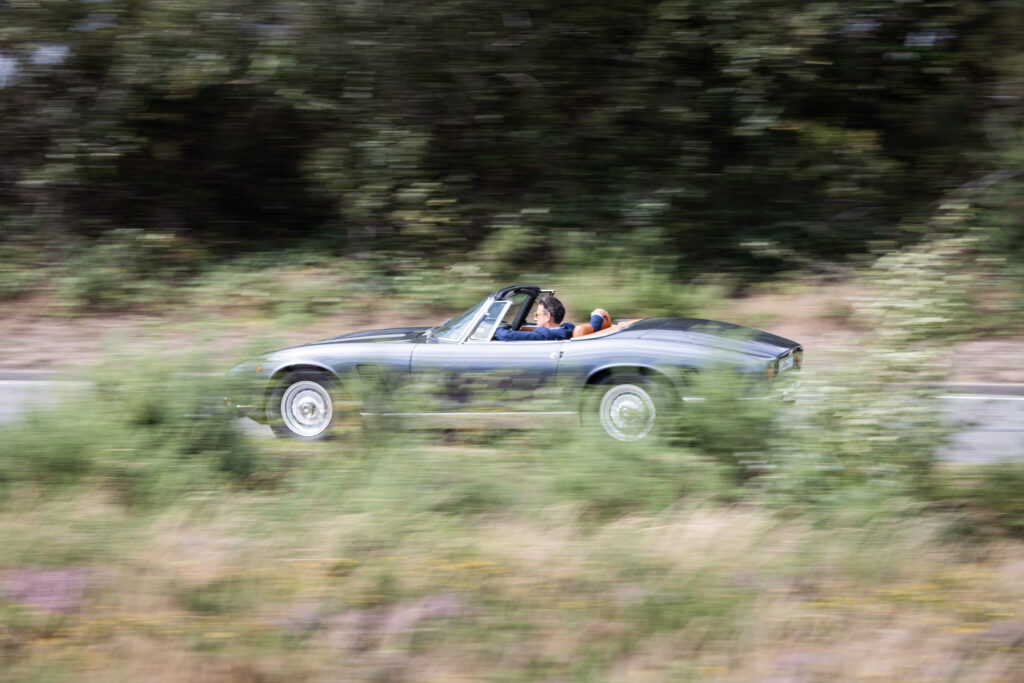
As we pause for Paul Harmer to do the static shots, Stuart and myself stationed on the lights to stop them blowing into the car as the wind picks up, I take in the lines. The shape is perfectly balanced and the low seats and headrests ensure an almost uninterrupted view all the way through. There are slats and gills everywhere rearwards of that sharknose, even on the filler flaps. The Grifo is big-hipped and has a sense of purpose and menace complemented by the quad lamps and the wonderful trailing curve from the headlights to the rear. Much like the rest of the car, the details such as doorhandles, three-spoke Nardi-Personal wheel and other furniture such as the quarterlight openers are a seamless blend of the delicate and brutal, while the dash is of the understated, period-plain ilk championed by the Lamborghini Islero. The wider ashtray (possible only because those gears were crammed into a smaller box), opulently quilted tan leather, and stubby gearlever with twin-peg-lift detent for reverse all finish it off. Hopefully the passenger won’t need their grab handle.
And then it’s my turn. Feather what looks like an organ throttle pedal, but is actually hanging, fire up that trusty smallblock and it settles into a gruff and appealing idle. There’s a decent turning circle, but it takes time to adjust to that partially assisted steering so it is easy to let it drift wide when pulling out. After that it is all go, though, and everything tightens up beautifully at speed, gathering momentum effortlessly. At first it is a little hard to tell if the drivetrain needs loosening or tightening, but it soon becomes clear that this is in effect a brand new car and it just needs using. Likewise, the gearbox is tight, but the short action is addictive and you are soon playing with the ratios approaching sweepers just to feel the tug and hear the noise as the Grifo crushes road imperfections.
What is interesting is how docile it can be when you are not using the Grifo as a sledgehammer and putting all your faith in the four-pot Wilwood brakes to keep you honest. It is great fun to drive, but with rather more poke than similar GTs. Heady stuff.
These stories usually sign off with a conclusion after the driving, but here it seems appropriate to go out on the defining feature of this car, its soft-top, or not. After all, it is just as important how good it looks with its black canvas hood up as it does with it down. Down, you notice that it completely stashes away under a rear deck, helping the bodywork to flow so gorgeously. It’s hugely impressive, and that’s before you’ve operated the system to raise or lower it. There are two levers under the rear deck that release and lift the panel and then release the hood, which swings smoothly into position before you use the catches to affix it and then more levers to lock it in place. It’s beautifully functional and engineered and clearly built up to a spec rather than down to a price. Like everything about this car it is consciously and reassuringly overengineered.
There are other Grifo convertibles – the prototype, of course, and didn’t Franz Prahl do some in the 1990s? – but nothing we’ve seen executed quite like this. That’s what makes it special.
1967 Iso Grifo Spider specifications
Engine 5358cc OHV V8, Carter four-barrel carburettor
Power 300bhp @ 6000rpm
Torque 344lb ft @ 4000rpm
Transmission Five-speed Tremec manual, rear-wheel drive
Steering Recirculating ball, electric power assistance at low speeds
Suspension Front: double wishbones, coil springs, telescopic dampers, anti-roll bar. Rear: de Dion tube, coil springs, telescopic dampers Brakes Dunlop discs
Weight c1600kg
Top speed 161mph (Coupé)
0-60mph 7.4sec (Coupé)
